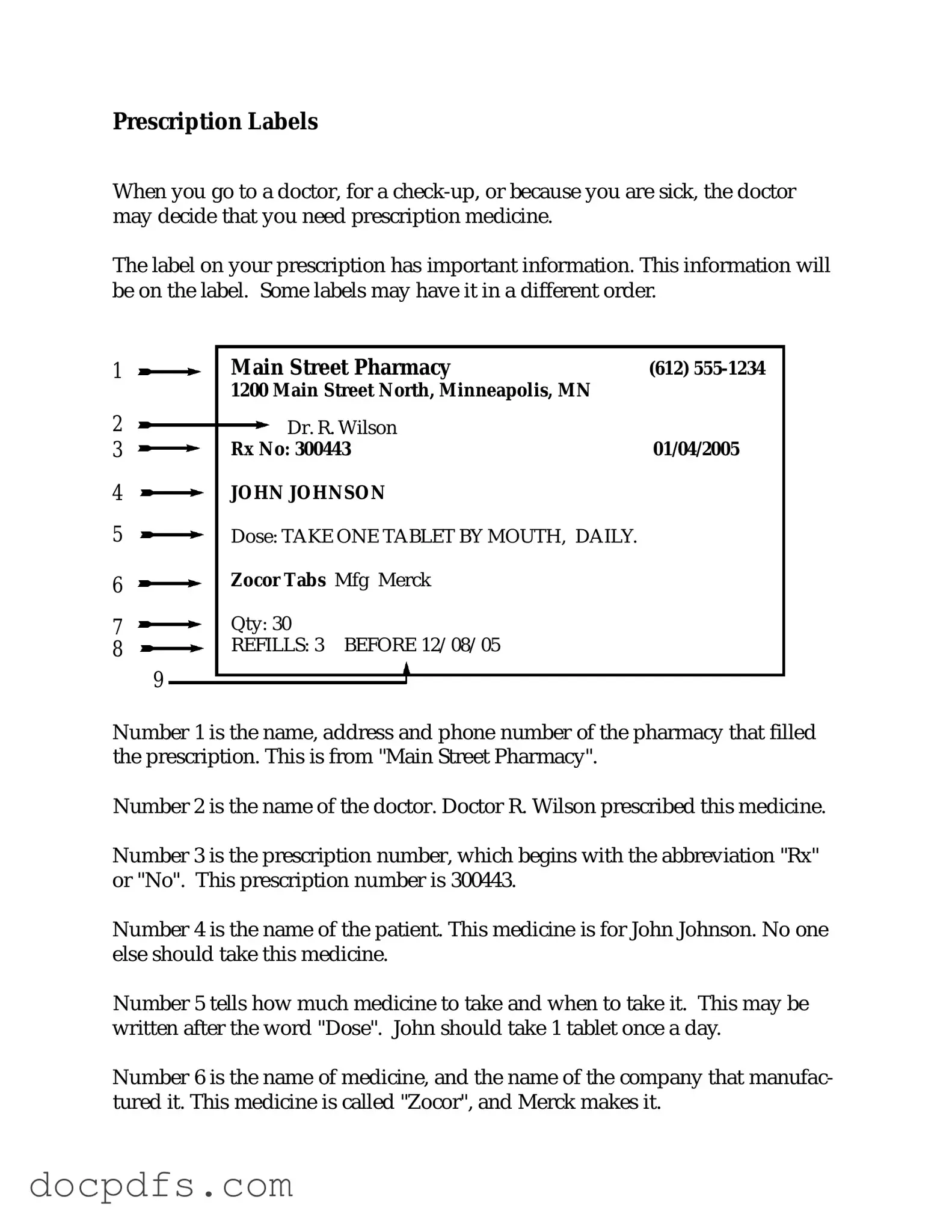The Prescription Label form is a document that provides essential information about a prescribed medication. It typically includes the patient's name, medication name, dosage instructions, prescribing physician's details, and any necessary warnings or precautions.
This form is crucial for ensuring that patients understand how to take their medications correctly. It helps prevent medication errors, promotes adherence to treatment plans, and provides a clear reference for patients and healthcare providers.
The prescribing physician or authorized healthcare provider is responsible for filling out the Prescription Label form. However, pharmacists may also provide input to ensure that the label accurately reflects the medication dispensed.
The form should include the following information:
-
Patient's full name
-
Medication name and strength
-
Dosage instructions (how and when to take the medication)
-
Prescribing physician's name and contact information
-
Pharmacy information
-
Any special warnings or side effects
Yes, modifications can be made to the Prescription Label form. However, any changes must comply with legal and regulatory requirements. It is essential to ensure that the information remains clear and accurate for the patient's safety.
If you notice an error, contact your pharmacist or healthcare provider immediately. They can correct the mistake and reissue a new label. Do not take the medication until the error is resolved to avoid potential health risks.
No, the Prescription Label form may vary depending on the medication type, state regulations, and specific pharmacy practices. Each medication might have unique instructions or warnings that need to be included.
Take the time to read the label carefully. If you have any questions or concerns, do not hesitate to ask your pharmacist or healthcare provider for clarification. They can explain the instructions and answer any questions you may have.
Once you have completed your medication regimen, it is advisable to keep the Prescription Label form for a short period. This can help in case you need to refer back to the instructions or if you experience any side effects. Afterward, you can dispose of it securely.
The Prescription Label form is specifically designed for prescription medications. Over-the-counter medications typically have their own labeling requirements. However, if you have questions about an over-the-counter medication, consult your pharmacist for guidance.
